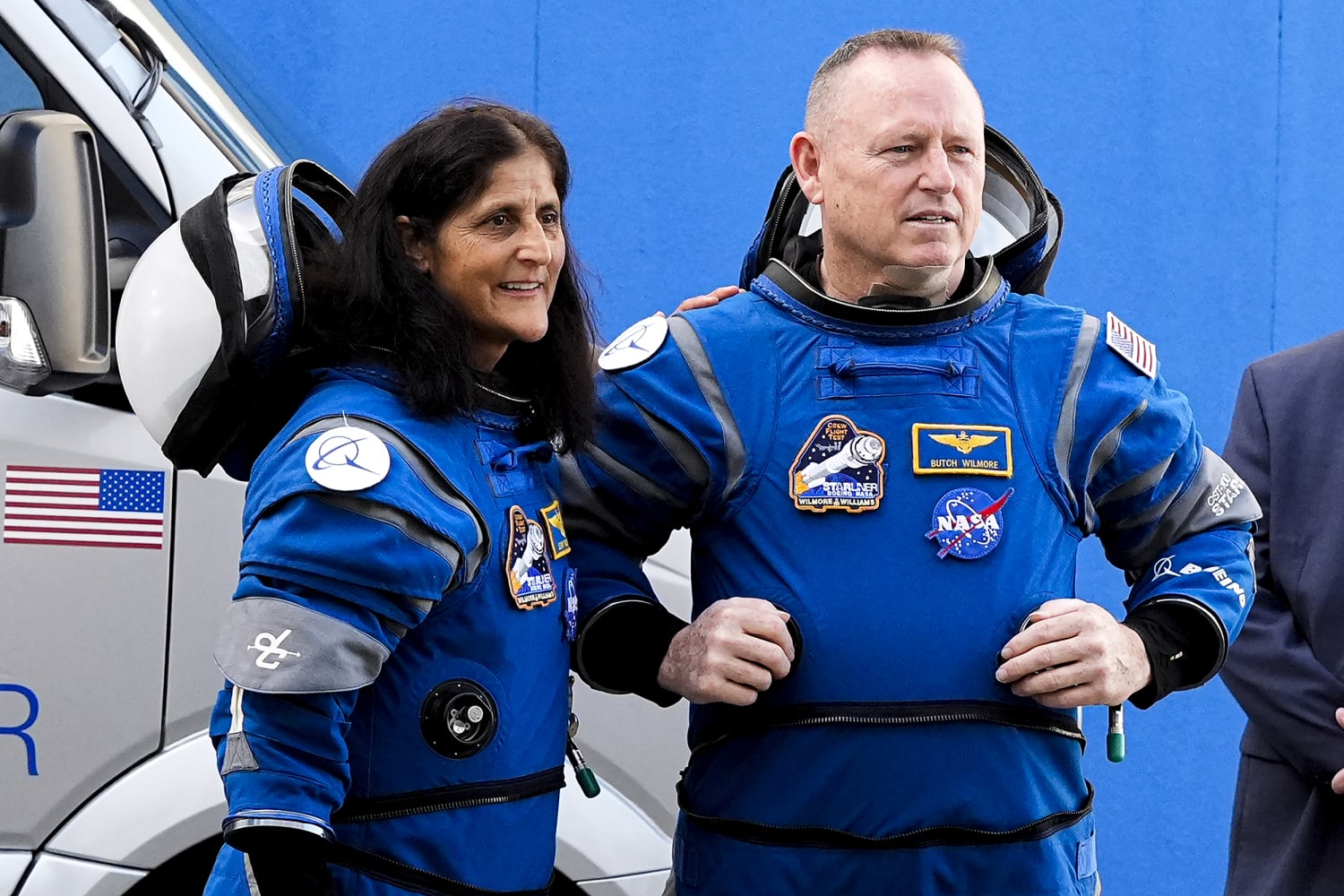The summary
- The two astronauts who flew Boeing’s Starliner capsule to the International Space Station stayed there longer than expected.
- NASA pushed back the date for their return trip to Earth again Friday, after several previous delays.
- The reason for the changes is an investigation into problems with the spacecraft that arose earlier during the flight.
The two NASA astronauts who flew Boeing’s Starliner capsule to the International Space Station earlier this month have remained in orbit much longer than expected — and will continue to do so, NASA and Boeing say.
The original plan for this first crewed test flight of the Starliner called for veteran astronauts Butch Wilmore and Sunita Williams to spend about a week on the space station before riding the capsule back to Earth. They arrived at the orbiting outpost on June 6.
But their return journey has been postponed several times. NASA initially set June 18 as the earliest date the astronauts could return, after which the agency said the return flight would take place on June 22. That was then changed to June 26, and the latest delay, announced Friday, pushed the planned landing back to an as-yet-undetermined new date.
According to NASA, the reason for the adjustments is an investigation into problems with the capsule that came to light earlier during the flight. The spacecraft’s propulsion system has a slow helium leak – something mission managers knew about before launch. At the time they said it was unlikely to affect the test flight or the safety of the astronauts, but four additional helium leaks were discovered as the spacecraft entered orbit.
As the Starliner craft approached the space station on June 6, five of its thrusters also malfunctioned, delaying the final approach by just over an hour.
Officials at NASA and Boeing said they will continue to monitor these issues as they plan for the capsule’s return.
“We are taking our time and following our standard mission management team process,” Steve Stich, manager of NASA’s Commercial Crew Program, said in a statement. “We are letting the data drive our decision-making regarding management of the small helium system leaks and thruster performance we observed during the rendezvous and docking.”
The Starliner’s test flight to the International Space Station is intended to demonstrate the vehicle’s ability to safely transport astronauts to and from low Earth orbit and to assess the various systems in space.
The capsule’s launch also faced multiple delays before finally launching on June 5 – years behind schedule and well over its original budget.
NASA officials suggested in a blog post that while a date for the astronauts’ return has not yet been set, it could come after a planned spacewalk at the International Space Station on July 2.
There are enough supplies on the space station to accommodate the visitors, and there is no need to rush the departure, officials said.
Stich said NASA will conduct a full review before giving the green light to undock the capsule.
Wilmore and Williams are currently on the ISS with seven crew members already stationed there: NASA astronauts Michael Barratt, Matt Dominick, Tracy Dyson and Jeanette Epps, and Russian cosmonauts Nikolai Chub, Alexander Grebenkin and Oleg Kononenko.
During their extended stay in space, Wilmore and Williams will assist with tasks on the space station and perform other tests as part of NASA’s process to certify the Starliner for future missions.
“The feedback from the crew has been overwhelmingly positive, and they know that every bit we learn during the Crew Flight Test will improve and sharpen our experience for future crews,” said Mark Nappi, vice president and program manager of Boeing’s Starliner program. a statement.
Boeing hopes to eventually operate routine flights to and from the space station for NASA, similar to the commercial service that SpaceX has provided the agency with its Crew Dragon capsule since 2020.
